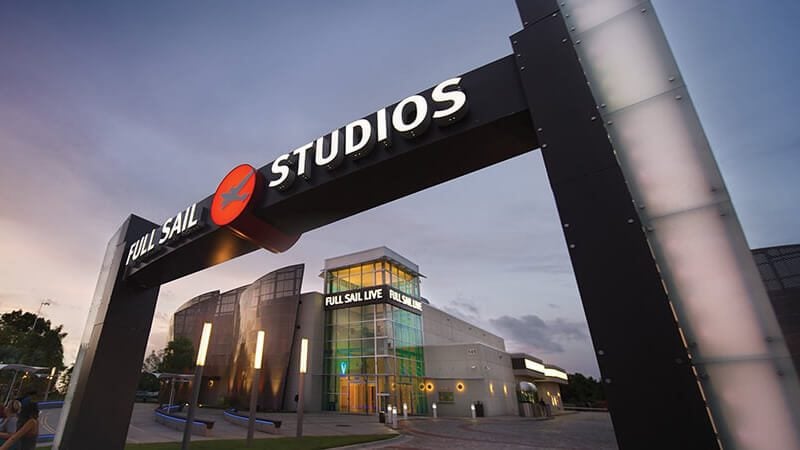Pro Advice
Film Instructor Grover Austin Discusses Set Safety
Filmmaking is a highly technical craft, relying on a host of lighting, audio, and camera equipment to translate a director's vision to screen. This gear is essential to producing the movies we watch, but is also delicate, heavy, and can be powered by high voltage electricity. It requires proper training to not only capture the footage you need, but also do it safely.
There's a lot of people working around a lot of hardware on set, which demands great respect from the cast and crew in order to prevent potential accidents. Our Film program instructors are hyper-aware of safety concerns while working alongside our students, and we learned more about what precautions our team takes from Grover Austin, course director for the Advanced Lighting class.
“Safety is very important to us from day one, we are overly safety conscious, if there is such a thing,” he says. “Especially dealing with electricity and camera equipment, it’s nothing to be taken lightly, so we really drill it in. Even our smallest light that we have could harm you, a 100-watt light, and we have lights that are up to 10,000 watts.”
Proper industry practices are very much in place on student film shoots – employing sandbags to stabilize the lighting stands, floor mats to cover wires, safety cables for anything rigged overhead, and a strict close-toed shoes policy. Considering all the electrical gear, there are also contingencies in place for outdoor shooting. Afternoon showers are common throughout a Florida summer, and our staff keeps a close watch on the skies when filming on the Full Sail backlot or on location.
“If it’s a very light drizzle you put rain hats on your lights and keep shooting, but if there’s any lightning on the horizon we pull the plug and go back inside,” Grover says. “Regardless, the distribution boxes are always put on wooden boxes for insulation to protect them from wet ground, and also covered in plastic. On a professional shoot the key grip has the final say in safety, that person can put the brakes on any shot if they don’t like the look of the weather, or even the way something is rigged.”
Supporting the procedural practices is the use of proper set etiquette. Awareness plays a large role in keeping a film set safe. Everyone is busy, stress can be high, and taking the time to make other crew members in your vicinity aware of what you’re doing is crucial. What Grover and the Film team do is ingrain a specific set of industry call outs for students to get used to using in certain situations.
“We have power outlets that are 200 amps capacity and all the breakers need to be turned on at the last second,” he explains. “When we do this we make sure we always say ‘power going hot’ and that the call is loud enough so that everyone across the set knows that this massive conduit of power is now on. Calls are very important in this business, like whenever you turn on any light you always say ‘watch your eyes,’ no matter how big or small it is. Also if you’re carrying heavy gear onto a set you say ‘watch your back’ or ‘point,’ meaning that you have the pointy legs of a heavy lighting stand over your shoulder heading towards people who have their backs turned to you. It’s all just a courtesy.”
Other concerns during filmmaking are the use of props, including vehicles, weapons, or anything else an actor may hold or interact with during a scene. Interior car shots can be simulated through lighting and having people shake the body to simulate motion – eliminating many safety issues. The use of weapon props like guns, knives, or swords also go through a strict approval process.
“If there’s any prop weapons at all they have to be taken over to our security department and photographed,” Grover says. “You obviously can’t bring a real gun, and any blade has to be dull and fake. We’re very thorough about that. If you don’t clear your prop weapon at least four days in advance, you won’t be allowed to use it.”
Despite all the safety practices that are in place, Grover feels they haven't impacted the scope of student films, which have included a number of elaborate set pieces through the years. There are always alternative solutions to potential problems during pre-production, and then issues that come up on set also have a way of teaching students the kind of creative problem solving that is vital to filmmaking.
“If something is at all dangerous, we say ‘no’ when we have to, then we think of another way to go about it,” he says. “We can simulate something like fire with flicker masters, which are random pulses of light that look like fire. And then anything really elaborate we do digitally, we have a green screen lab and gear, and that’s where they take that stuff. There’s always options for students, even in post-production, and it’s rare that we have to completely eliminate something.”
Whether you’re ready to apply or just want to learn more about Full Sail University, our Admissions Representatives are here to help. Call us or request more information.
